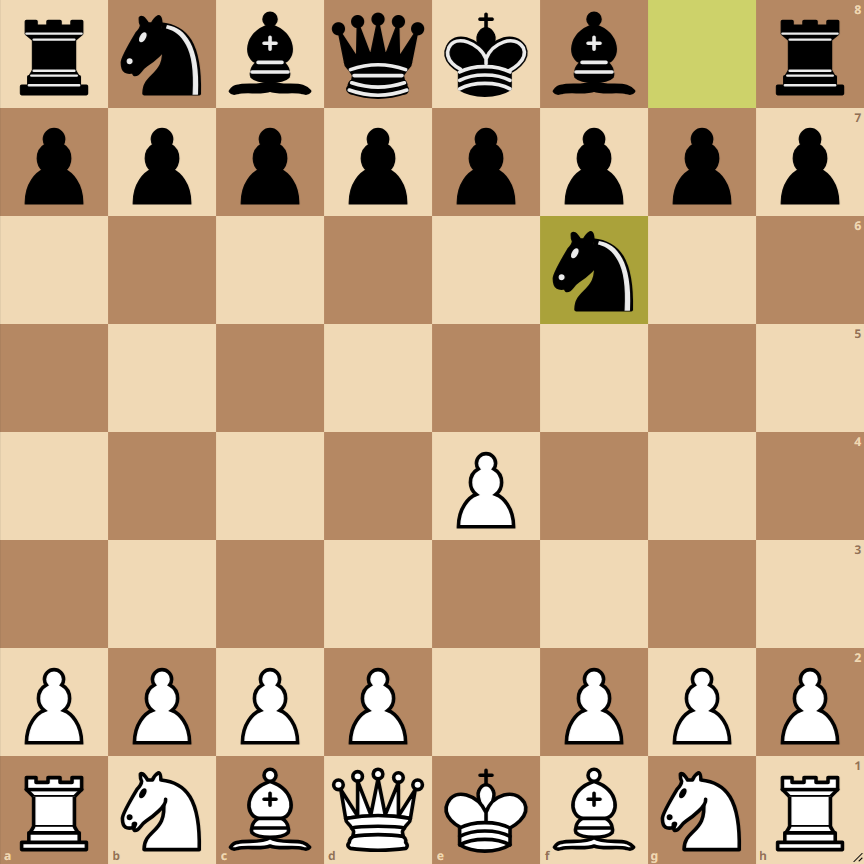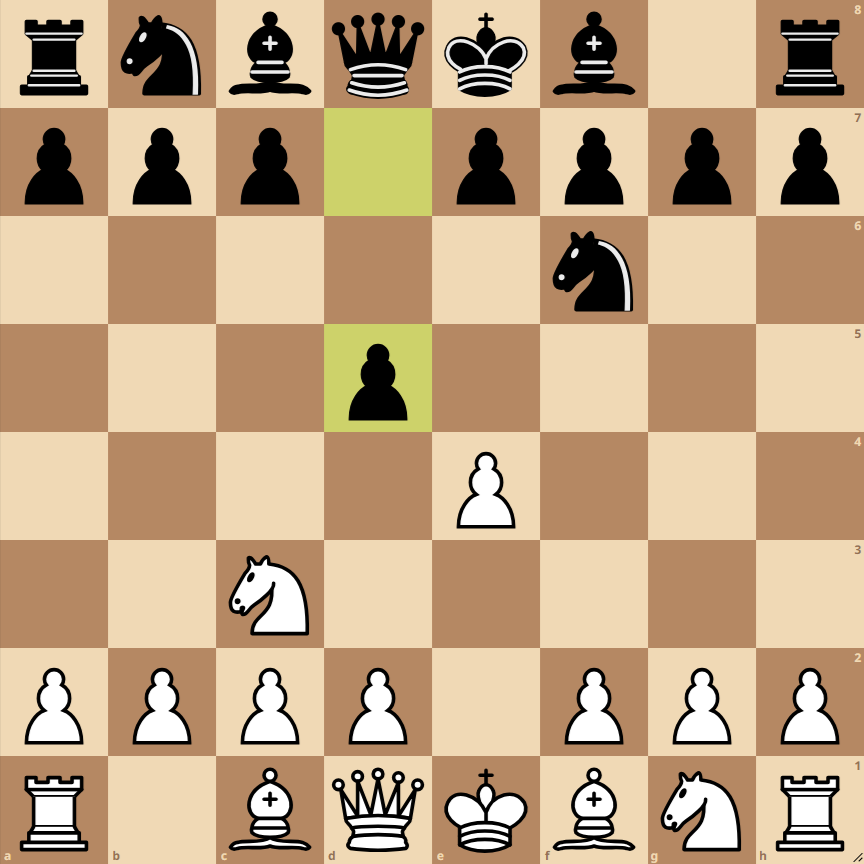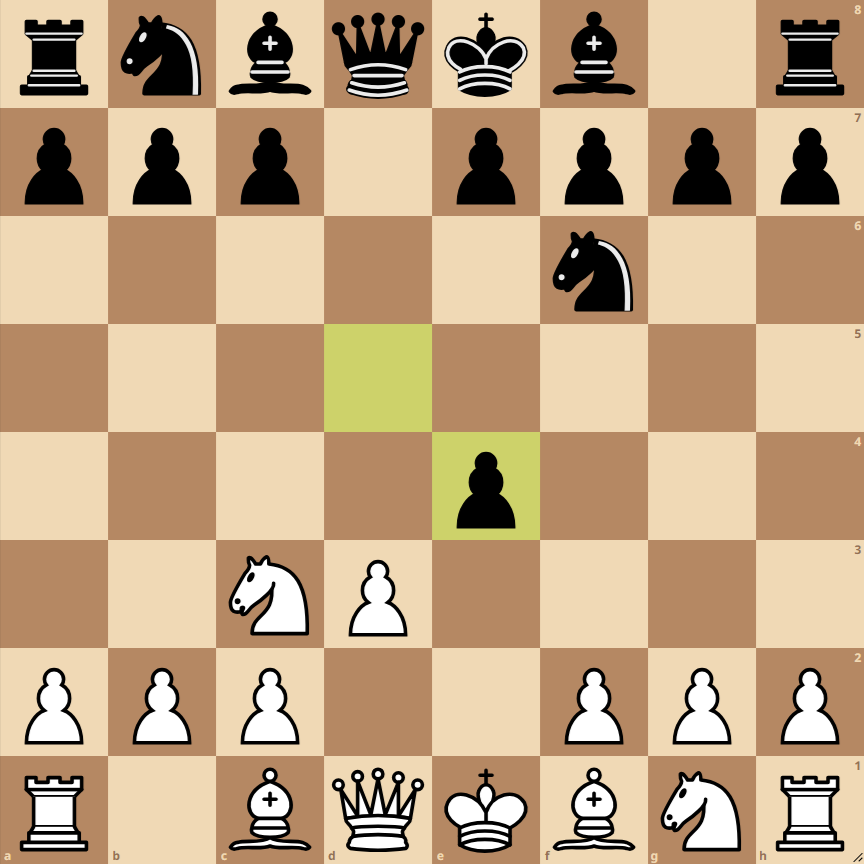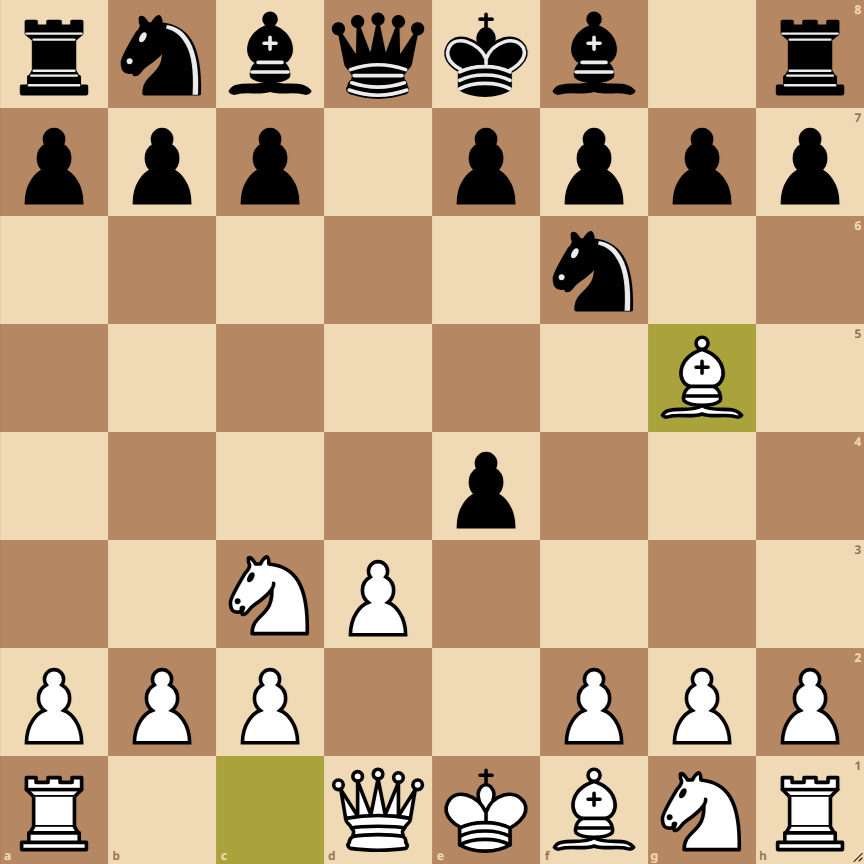How to Play the Alekhine Defense: Scandinavian Variation Myers Gambit



- 1. e4: This move opens lines for the queen and king’s bishop, controls the center, and prepares king’s development.
- 1… Nf6: Black responds with the knight to pressure the e4 pawn and prepare central control.
- 2. Nc3: White develops a knight, defending the e4 pawn and further controlling the center.
- 2… d5: Black challenges the white center, aiming to open up the position and activate their pieces.
- 3. d3: White reinforces the center, preparing for a possible e4 pawn advance.
- 3… exd4: Black captures the e4 pawn, seeking to simplify the center and activate their bishops.
- 4. Bg5: White develops a bishop, attacking the f6 knight, creating tension and pressure in the position.
Alekhine Defense Variations: Scandinavian Variation Myers Gambit
4… h6
In this variation, Black challenges the bishop with h6, forcing the bishop to decide between retreating or exchanging for the knight.
4… e6
Black opts for a more solid development, preparing to develop the king’s bishop and connect rooks after king’s move.
4… Nc6
Developing another knight, Black seeks to control the center further and prepare an eventual e5 to free space and activate their pieces.

